Shtostsruppen Second Reich. Part of 2
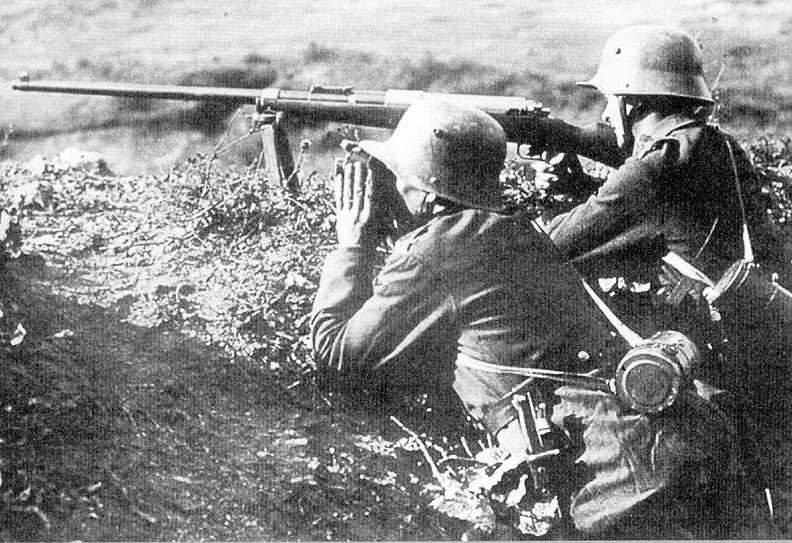
anti-tank gun with the calculation
In the Chasseurs and rifle battalions, artillery, cavalry, machine-gun, sapper and transport units, shorter rifles were used instead of rifles. The standard carbine had a length of 1090 mm (the length of the barrel 590 mm - 10 mm shorter than the rifle barrel). He became the main attack aircraft with 1915 g. Due to its shorter length, it was more convenient for operations in the trench, and a little smaller range did not have special significance in a close combat situation. Positive qualities of the carbine: more perfect sight, good ballistics, durable bed. Negative qualities: weight, complex trigger.
German rifle (top) and two modifications of the carbine
The assault of the first received sub-machine guns MP-18 Bergman system. Working on the principle of a free gate, the weapon "fed" 9-mm cartridges. By pressing the trigger releases the shutter fighter fed forward and shall be sent to the top cartridge from the magazine into the chamber - and then came the shot. The pressure of the powder gases threw back the shutter, the latter compressed the release spring, and then the cycle was repeated. With all the simplicity of the device was extremely effective. The box-shaped 32-cartridge magazine was inserted on the left - side of the receiver. The weight of the submachine gun - 4050 g., Length - 820 mm, barrel length - 200 mm. 32 cartridge MR-18 produced for continuous fire only 3,5 seconds. In the 1918, the German army received more MP 30000-18, but most came to the troops after the operation is completed, "Michael." But E. Ludendorff counted using submachine guns to significantly increase the firepower of its infantry in the assault on the Hindenburg line allies. In the assault company "Bergman" armed officers, non-commissioned officers and 10 privates (in an infantry company - only 6 fighters). But the submachine gun had a lot of delays in firing, and the troops didn’t really like it - although it was more perfect than the Italian Revelli.
submachine gun MP-18
Non-commissioned officers of the mortar and machine-gun-armed, in addition to the rifle, Mauser pistols or P08 Luger. Thanks to the holster used as a butt, these pistols could conduct aimed fire at more than 100-meter distance. There was a “assault” model of the Luger — an 32-charging drum shop (a “snail type” drum developed in the 1917 r.) Type.
gun luger
"Assault" Luger on the receiver carried the stigma of "dead head". The innovation has increased the firepower of the weapon - albeit to the detriment of convenience and, in part, reliability (it had a complex system of supplying cartridges and the distortions of the latter made the gun more capricious). The downside was the complexity and rather big cost of the store.
pistols Luger and Mauser С96. Armed with gunners, machine gunners and mortar men
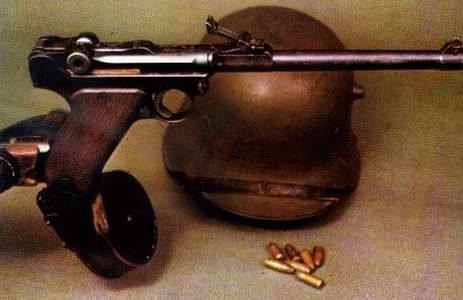
assault lugger n xnumx
Hand grenades gradually improved. The most popular was the Stielhandgranate 15 grenade beetle - a favorite attack aircraft.

grenade-beater Stielhandgranate 15
When in February 1916, they were going to attack Verdun, carbines and rifles hung behind, while his hands were free for throwing grenades. On the 255-mm wooden handle was placed a metal cylinder with a long 100 mm and diameter 75 mm. It was filled with explosive. To the cylinder was attached a metal clip side - it is allowed to hang grenade belt. At the end of the handle there was a check - pulling the last one, the fighter triggered a flammable tube with a slowdown of 5,5 seconds (there were also 3- and 7-second tubes, which was noted on the handle). There was also a grenade model that had a spring-type shock fuse (it worked when the grenade hit the ground).
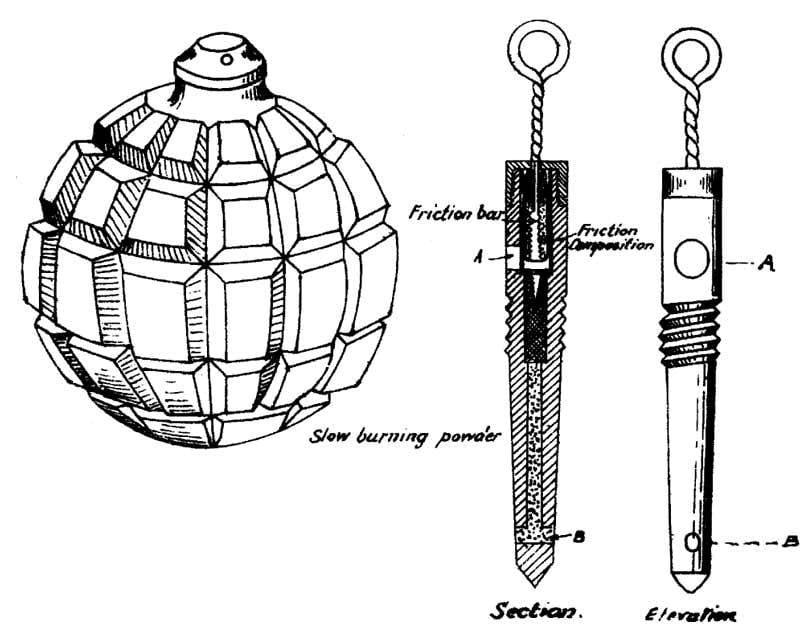
The German ball grenade had a diameter of about 3 inches. Her cast-iron case, about half an inch thick, was varnished. Black powder was used as BB. The friction igniter of this sample was triggered when the wire was pulled over the wire with a strap-hook bracelet
In 1916, the Eierhandgranate 16 entered service - with a weight of 310 gr. she had a black cast iron shirt. Fuse provided 5-seconds of deceleration (and there was a model with 8-second delay - for firing a rocket-propelled grenade). The radius of defeat, however, was quite limited. 1916 was first used in July.
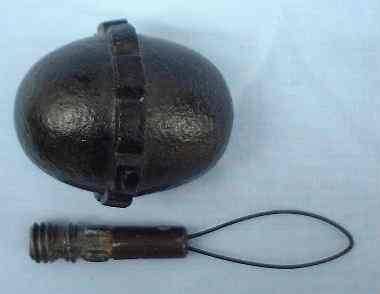
grenade Eierhandgranate 16
German soldiers, the British counterattacked north Tipvalya (on the Somme), threw grenades and managed to regain lost ground. These grenades were very popular - not least for their compactness and good quality. The garnet has been used more powerful explosive than Stielhandgranate 15.
Other types of grenades were used - Kugelhandgranate 13, Kugelhandgranate 15. The main striking factor of the German grenades was not the fragments, but the shock wave - respectively, these weapons were particularly effective not in open space, but in a trench-war environment. Attack aircraft, whose task was to attack their strongholds, often used a bunch of grenades - throwing them into the loophole or parapet.
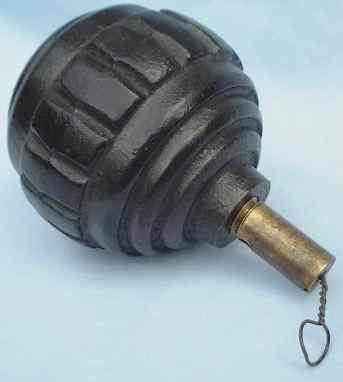
grenade Kugelhandgranate 13
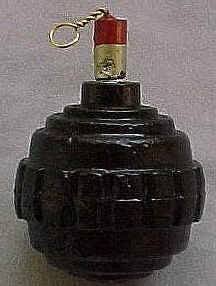
grenade Kugelhandgranate 15
German Pomegranate Guide
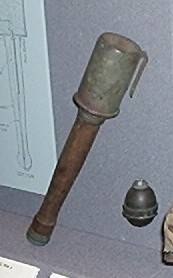
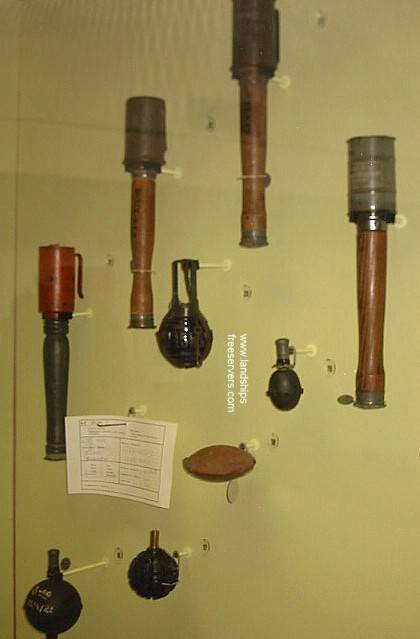
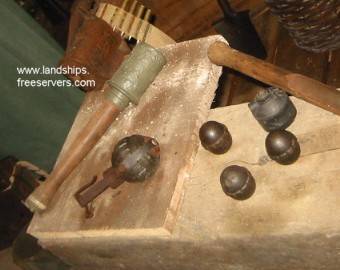
samples grenades
In 1914, each infantry regiment had 6 machine guns in a machine-gun company. In 1915 the shelves, the further separation is obtained machinegun (30 - 40 fighters at 3 - 4 machine guns). From the 2 half of the 1916, the 3 machinegun company (one company per battalion) of the regiment already had (or should have) 18 machine guns. In the winter of 1915 / 16. We began to appear specialized machine parts - Maschinengewehr Scharfschuetzen Trupps (parts of machine-gun shooters). They were intended for offensive operations. The personnel prepared for special 4 - 5-weekly courses. Each was actually a machine-gun company as part of 6 machine guns. The baptism of machine-gunners was held near Verdun, where 3 machine-gun rifle companies drove into machine-gun battalions - each division was given such a battalion on the front line. They interacted with corps and divisional assault units and subunits.
German machine gunners, September 1918 of the year
Each of the assault battalions being formed had 1 - 2 machinegun companies - and its firepower was equivalent to an infantry regiment. In 1917, the number of machine guns in the company increased to 8, 10, and finally 12. Thus, assault battalions had 12 - 24 machine guns, and some units had a machine gun platoon of 2 machine guns.
The main machine gun - MaschinenGewehr 08 (version of the machine gun system Maxim). Weight - 25 kg (combat weight - with a machine and with cooling water in the casing - reached 63,6 kg).
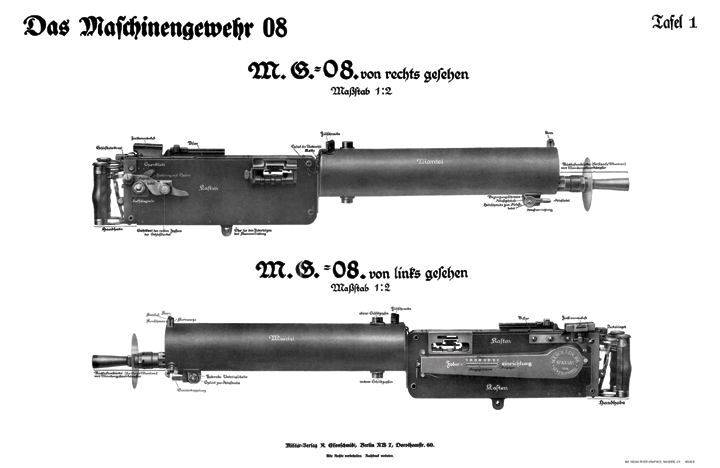
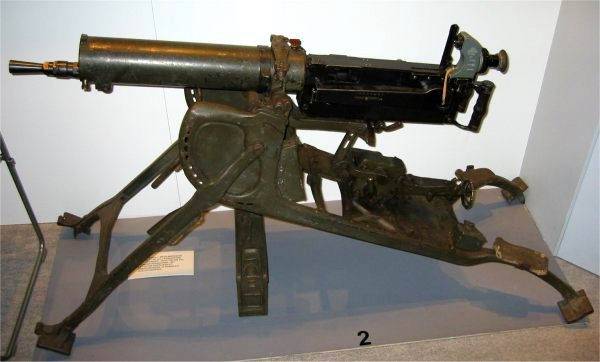
machine gun MG 08
Naturally, despite the effectiveness, MG08 was mainly a defensive weapon - dragging a machine gun over a field crammed with more than 60-kg fire was not an easy task. However, during the June offensive of 1916, near Verdun, machine gunners also marched in the battle formations of the advancing Germans. Thus, the Life Guards Bavarian regiment with the support of the “Pop” masturbation captured the town of Fleury - 24 MG08 took part in street fights [Drury I. German stormtrooper 1914-1918. London, 1995. P. 14].
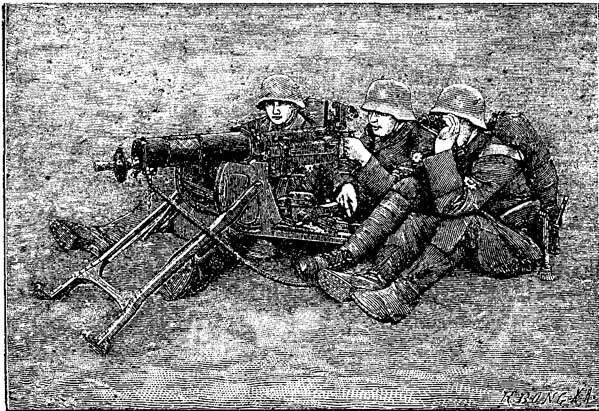
The calculation of the German machine gun MG 08
The Dreize machine gun of the 1908 / 15 model was used as well (weighed almost 30 kg, the target range of the 2000 m, the combat rate of fire of 250 shots per minute).
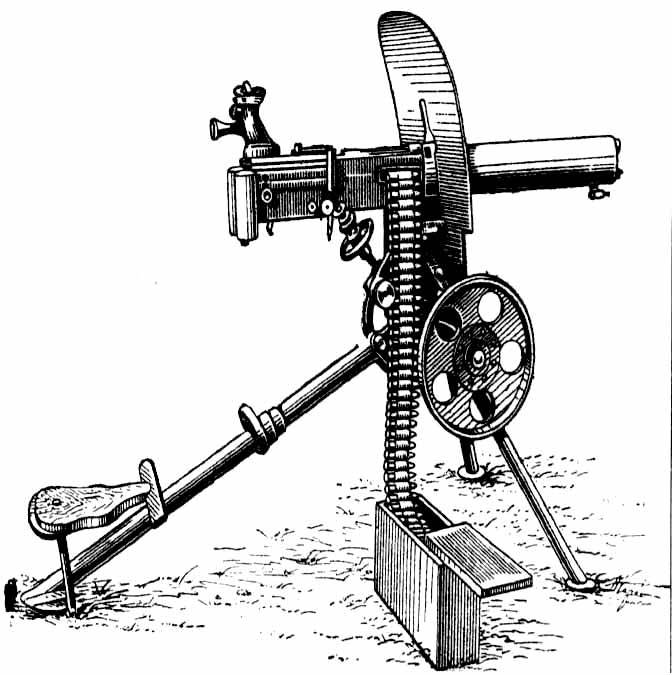
Dreyse machine gun model 1908 / 15 g.
The appearance of light (manual) machine guns heralded the transition to infantry group tactics - after all, such a machine gun gave each group of fighters greater stability and independence. Of course, first of all it concerned the assault units, especially in need of such a machine gun. In 1915, the Germans tried to create a machine gun based on the MG08 machine gun.
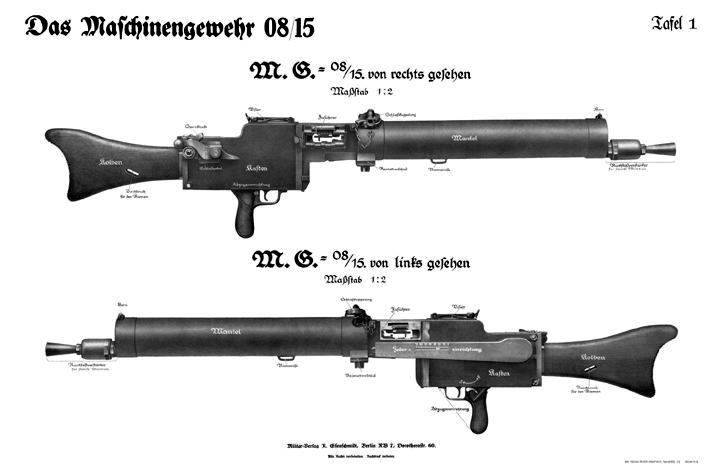
Light machine gun Maxim MG 08 / 15 arr. 1915
Also, since most of the armies of the Entente by this time already had this type of weapon, the Germans formed machine-gun parts from captured machine guns. The 1 th battalion of light machine guns (3 companies for 4 officer, 160 soldiers and 30 machine guns; human 4 machine gun calculation; fighter’s weaponry - carbine) appeared in August 1915, having participated in the September fights in Champagne. He was armed with light machine guns of the Madsen system.
Madsen light machine gun
This Danish machine gun was a real handbrake (air cooling, weight less than 10 kg, bipod, food from a box-shaped 20-cartridge magazine). In the course of the battle on the Somme, almost nothing remained of the battalion, and the material part was lost. Acting in the 2 echelon of the offensive, after the front line was broken, machine gunners who destroyed the allied infantry were introduced into the breakthrough. The machine-gunners brought the fire of British artillery on themselves - with all the ensuing consequences. But by the end of the battle, the Germans captured a sufficient number of British Lewis - and after a remake (which allowed the use of German ammunition) they replaced the lost Madsenes.
Lewis and Mg 08 light machine guns
The Lewes battalion remained in service until April 1918. The attackers valued the Lewises - retaining them even after entering a part of German-made light machine guns. Lewis continued to use until the end of the war (in Brussels, even the production of repair and modification of trophies was organized).
German machine-gun platoon on the march. Somme, 1918 g. The unit is armed with Lewis captured machine guns including
In 1916, the Bergman LMG.15 light machine gun was adopted (but in small quantities). The first to receive it were German troops stationed on the Italian front.
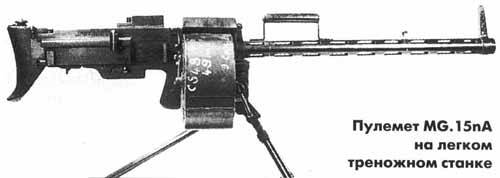
Bergman's light machine gun LMG.15
In December of the same year, the MG08 / 15 light machine gun (MG08 on a bipod and equipped with a wooden rifle butt and pistol grip) was put into service. The machine gun cover, still filled with water, was smaller in volume. With all this, we managed to reduce the mass of the weapon - but only to 19.5 kg, and the machine gun would be more correct to call it not “light”, but lightweight.
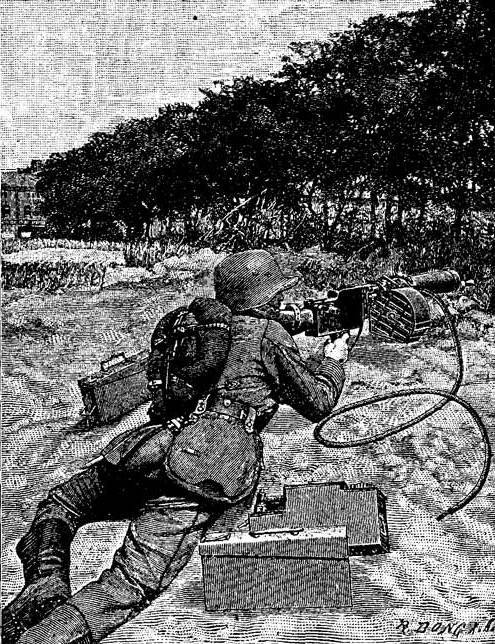
MG08 \ 15 light machine gun
On the other hand, MG08 / 15 is the first universal machine gun in the world, light enough to move around the battlefield and heavy enough to engage in dense fire. The tape feed (in the 100 or 250 cartridges) allowed MG08 / 15 to form a fairly dense fire, exceeding Lewis and Shosh machine guns. The target range of fire - 2000 m at a practical rate of fire - 100-150 shots per minute. For the first time, MG08 / 15 was used on the Western Front in the spring of 1917. Infantry companies received 3 of such machine guns, and by the end of the year, the Western Front infantry company had 6, and the Eastern Front infantry company had 2 MG08 / 15.
calculation of the Mg 08 / 15 machine gun in the battle in Champagne April 1917
The following year, a lighter version appeared - MG08 / 18. At the end of the war, these machine guns became the main automatic attack aircraft of the attackers, who used them where fighters with rifles acted - in funnels, in the folds of the terrain, etc. The light machine gun, which could quickly change position, became a serious help, allowing the seizure of lines and their retention until the main forces.
The German army had two types of rifle grenades - Gewehrgranate M1913 and Gewehrgranate M1914. Both weighed about a kilogram and were fired with a special blank cartridge from a standard rifle. A blank cartridge was loaded into the rifle, then it was necessary to rest it against the ground with the butt and tilt to 50 degrees. Then a ramrod was inserted into the barrel, the aiming was refined and a shot was made. The grenade was equipped with an additional charge of black powder — when it hit the ground, it threw the grenade into the air, where it exploded, scattering debris. Later, the Gewehrgranate M1916 appeared.
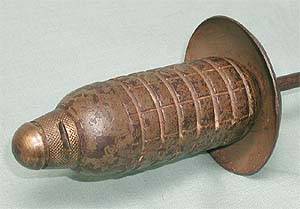
Gewehrgranate M grenade
They could shoot grenade launchers and signal rockets. The first grenade launcher was put into service for 1916, having a mass of 40 kg, it consisted of 2 parts: the 23-kilogram grenade launcher itself and the 15-kilogram machine. Thanks to the collapsible design it could be quickly transferred. The range of the grenade launcher - 50 - 300 m. In 1916, an infantry regiment had 12 grenade launchers (calculated by 2 man). The grenade launcher is an effective weapon capable of supporting the advancing infantry with open and closed positions. In each infantry company, detachments of throwers of grenades appeared - first, to dazzle the enemy, smoke and then ordinary grenades were thrown. Then the grenade throwers were the first to leave the trench, and, supported by infantry, they again threw grenades at the enemy.
By 1914, the 3 type of main mortars was in service: light 76-mm (weight of 4,7 kg mines, maximum range of fire - up to 1400 m (at an angle of 45 degrees)), average 170-mm (respectively - 49,5 kg and up to 1500 m) and heavy 210-mm. The 76-mm mortar (having a rifled barrel) used ammunition obtained from defective 77-mm field gun shells. 76-mm mortar fired from behind shelters, from the reverse slopes of hills, from trenches or craters. Moved weapons calculation forces.
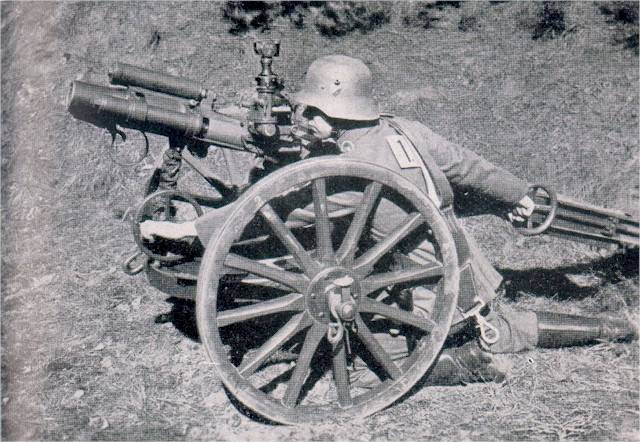
76-mm mortar
The 170-mm mortar was an effective infantry support weapon, particularly in the destruction of field closures. Calculation (6 people), holding the bed, moved the mortar on the battlefield.
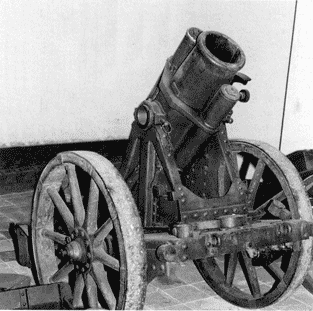
170-mm mortar
The heavy mortar, originally intended for the defense of fortresses, was the deadliest weapon. Thanks to the hinged trajectory and powerful explosive charge 100-kg of ammunition, its mines brought down a whole series of trenches.
240-mm heavy mortar
In 1916, new modifications of all 3 types of mortars appeared, possessing greater range and ability to fire ammunition equipped with poisonous substances. Separate mortar battalions appear. The infantry regiment was given such a division. In each - 12 76-mm mortars and 24 grenade launcher. Mortars of heavier caliber had mortar companies (the infantry division, as a rule, included such a mortar company). The company consisted of a platoon of heavy mortars (4 240- or 250-mm) and 2-x platoon of medium mortars (8 170-mm). The reserve of the High Command was at least 13 mortar battalions, which, as necessary, were transferred to certain sectors of the front. The mortar division consisted of 4-x companies (6 heavy and 8 light mortars). The assault battalion had, as a rule, a mortar company. Individual assault companies usually had 4 light mortars. Light mortars and grenade launchers were located either behind the starting position or in the 2 line of the attackers.
detachment
German rocket launcher
18. 01. The 1915 was formed by the Guards Pioneer Volunteer Battalion (primarily for testing the newest weapon, the flamethrower) Major Reddeman. Then it was reorganized into the 3 th Guards Pioneer Battalion, and then into the Guards Reserve Pioneer Regiment (the “father” of the flame-throwing units of the German army), called Flammenwerfer Abteilung. He participated in the battles until the end of the war.
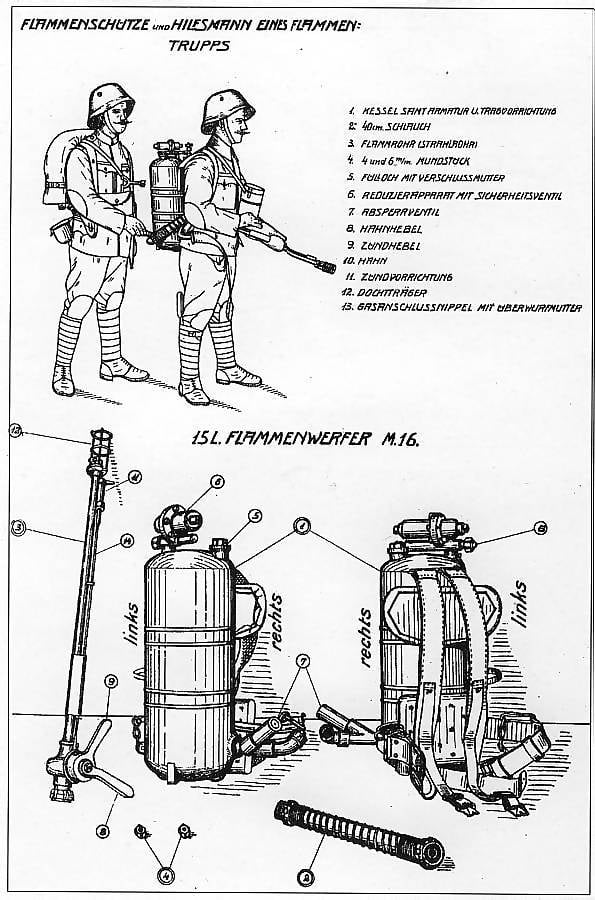
memo for flamethrowers
Initially, the battalion included the 6 mouth, and by the end of the 1917, their number increased to 12 (18 backpack and 20 heavy flamethrowers in the company). The Reddeman regiment, becoming a strike unit of high combat value, formed its own assault unit. Types of flamethrowers were subdivided into: portable (calculation of 2 of a person - carrier of a cylinder with a fire mixture and an operator directing a flamethrower hose to a target) and stationary (throwing a fire jet at 20-meter distance).
light flamethrower with the calculation
In 1915, the flamethrower was tested on the Western front - and caused panic in the ranks of the enemy infantry. Each assault battalion had a flamethrower platoon (4 - 8 light flamethrowers). The success of flamethrowing units (equated with assault) depended on many factors - which showed an episode of unsuccessful use of flamethrowers on the Russian front near Skrobov.
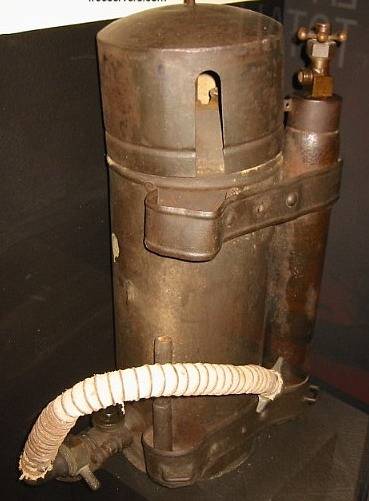
flamethrower of the German army
The 1915-mm trench Krupp gun tested in 37 proved to be insufficiently effective (37-mm infantry guns were light and accurate in aiming, but limited in the possibilities of hitting targets — both open and hidden behind the folds of the ground, because a light projectile could cause damage only with a direct hit, and hit a living target only with a close break) and replaced with a mountain howitzer (could also move around the battlefield on his hands).
trench gun in battle
And in 1916, 76,2-mm infantry guns began to arrive at the armament of the assault battalions - captured Russian three-inches with a shortened barrel (from 2,28 m to 1,25 m). The gun received a sight calibrated to 1800 and a new 1 wheel, -1-meter diameter. The gun fired 5,9-kg shells of German production. By 1917, 50 batteries (4 - 6 guns) of infantry guns operated on the Western Front. Each assault battalion had such a battery. Such guns were very relevant - now not so acute was the question of support from the divisional artillery in identifying single targets. Efficiency increased with the defeat of similar targets, saving the infantry from unnecessary losses in an unexpected encounter with enemy machine guns.
trophy Russian 76-mm gun in the arsenal of attack aircraft
And then the infantry gun began to be used as an anti-tank gun. In 1917, around 50 batteries were formed, now equipped with native field 77-mm cannons on special low carriages (the barrel was attached not to the axle, but to the axle located in front of the axle).
German 77-mm gun in combat
These guns always moved manually around the battlefield and gradually became the main anti-tank guns (used semi-armor shells). From a small distance they hit small-sized targets (machine-gun nests, trenches, posts of observers and selected shooters) and participated in repelling enemy attacks and counterattacks. Thus, the armament of the assault units was powerful and adapted to the combat realities.
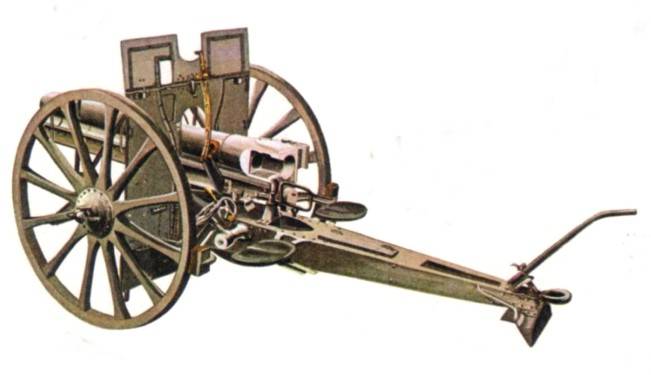
77-mm field gun
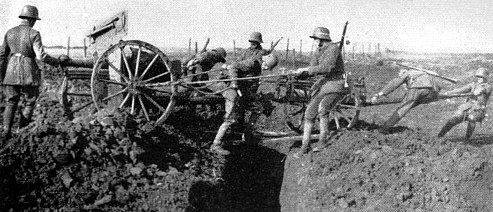
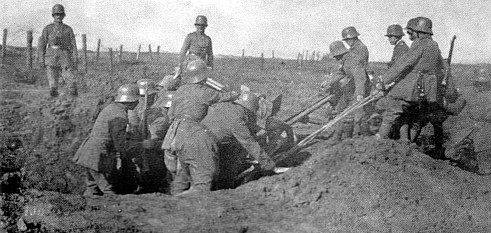
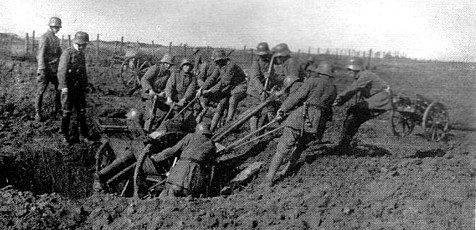
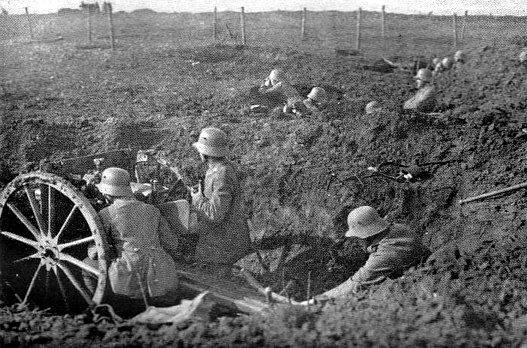
infantry guns. Pay attention to the ability to move around the battlefield, including through obstacles, by the forces of calculation. For the firing position, the usual funnel from the projectile was also quite suitable.
For trench combat there were several types of weapons, including various batons, daggers, bayonets, and trench knives. Daggers, the attacker's distinctive weapon, were made by him according to his own taste, often from a bayonet. Many preferred the sharply sharpened sapper blades — one side edge of the blade was ground, turning it into a slashing weapon. Calculations of heavy weapons and non-commissioned officers wore bayonet knives. T. n. combat knives differed significantly from each other (there was no approved model), being issued by different firms. The blades are about the same, but the arms have a different shape, although they were structurally identical: they consisted of wooden cheeks with transverse deep grooves (to prevent slipping in the hand) riveted to the shank. Blade length - 125-160 mm, width - 20-22 mm. It was a weapon, especially comfortable in a trench melee.
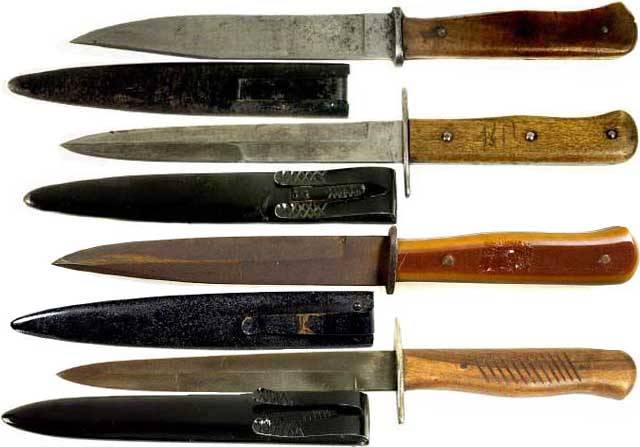
combat knives
Combat knife constructively consisted of a handle, crosshairs and a blade. He successfully combined the piercing and cutting functions: the cutting edge (blade) of the blade and the edge bevels with mutual sharpening turned it into a universal compact weapon. The blades were made of stainless steel by stamping or rolled steel sheet of the desired profile. Handles (solid wood overlay plates (beech, oak, hornbeam, or walnut)) were joined using rivets. Standard metal sheath had a bracket for fastening on the waist belt and, as a rule, were painted black. Various trophy and home-made knives were used. The blades of the bayonets were shortened to the desired size and honed. Or they took a metal rod from a wire fence and, having processed it, sharpened it - until they got a handle and a blade (the so-called French nail). Sharpened a combat knife from one or both sides.
Продолжение следует ...
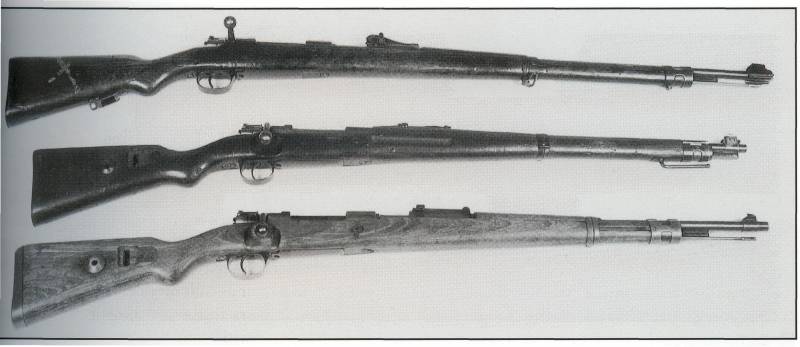
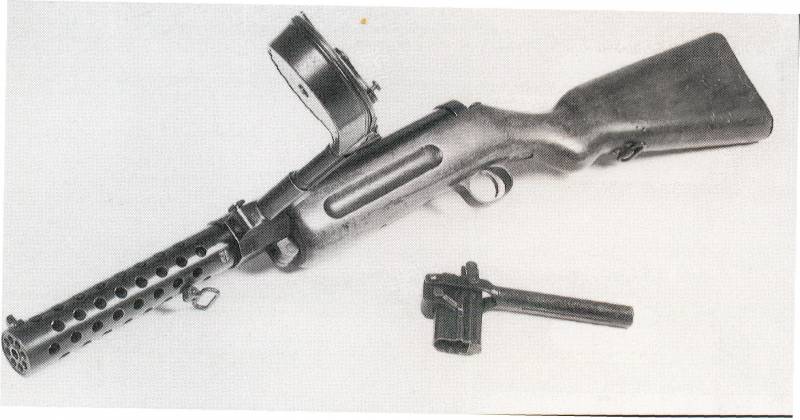
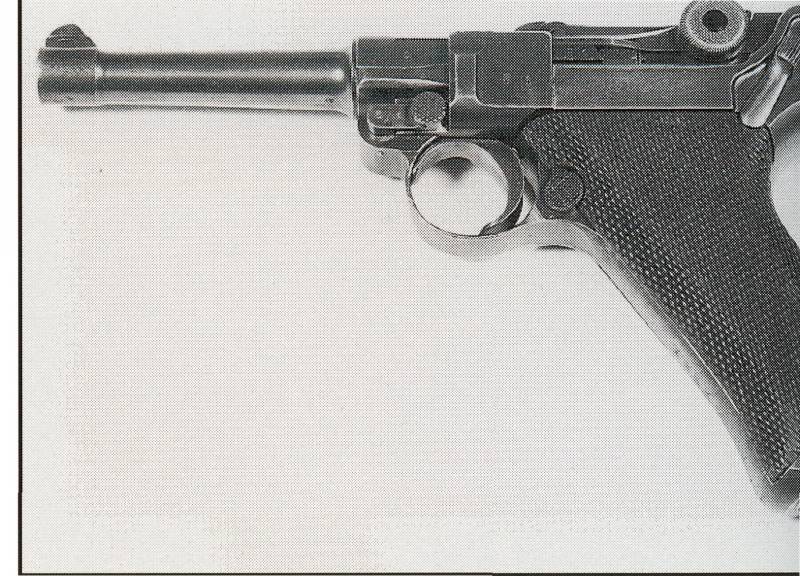
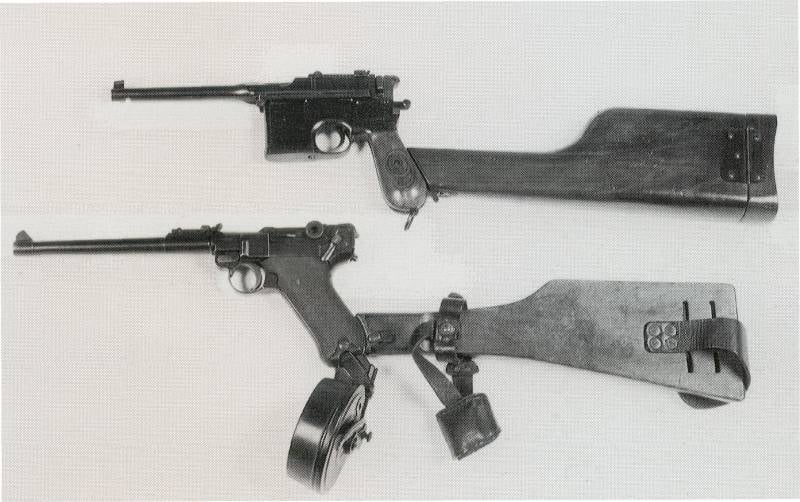
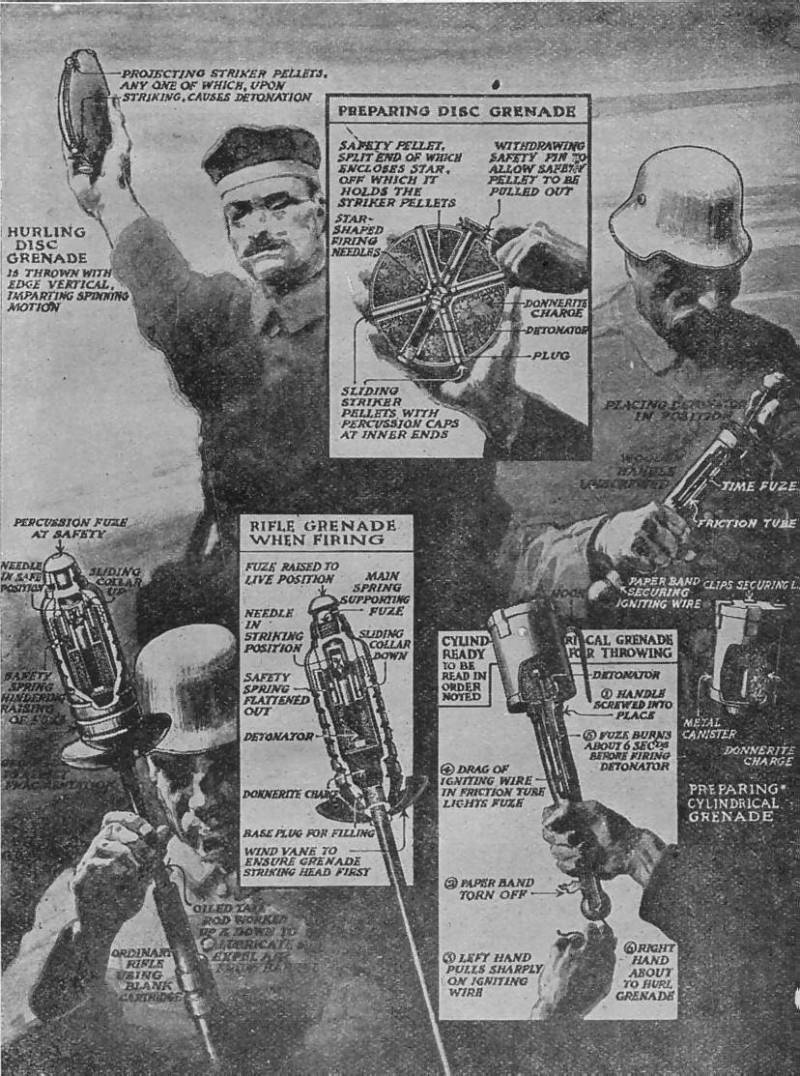
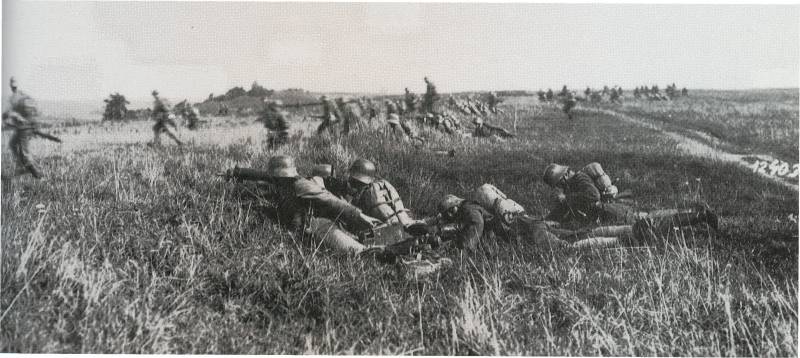
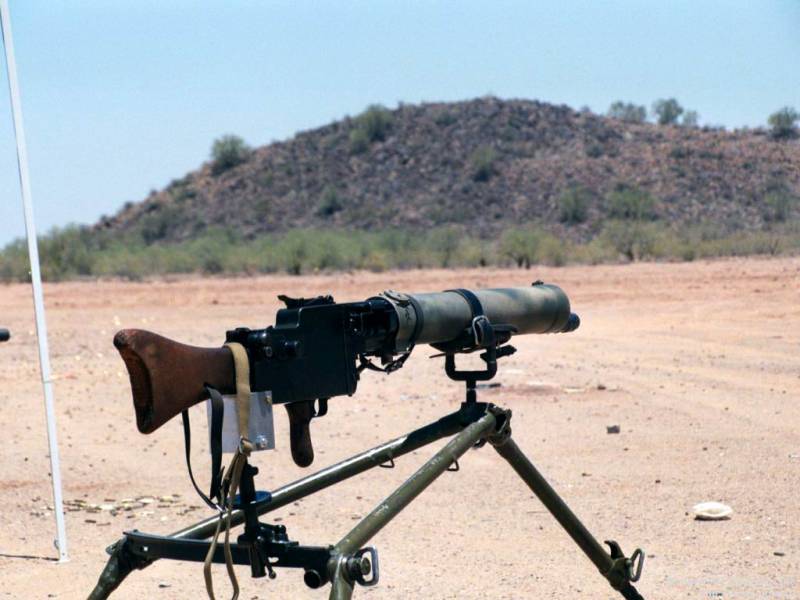
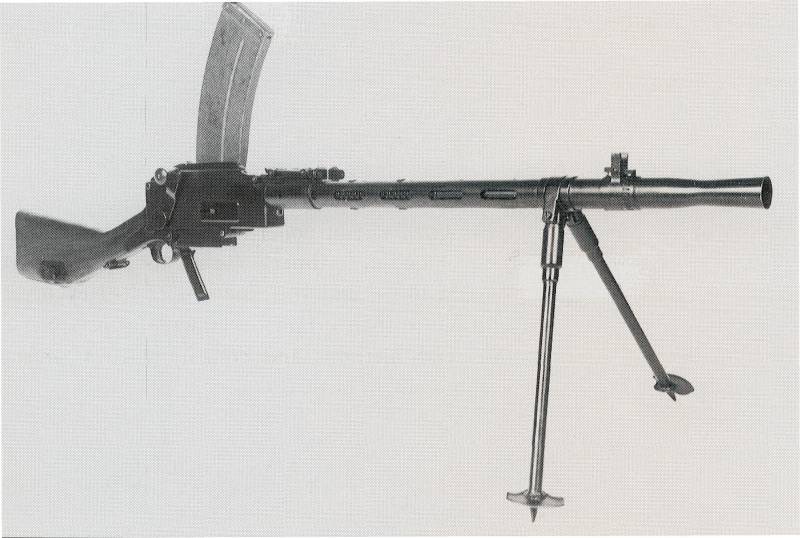
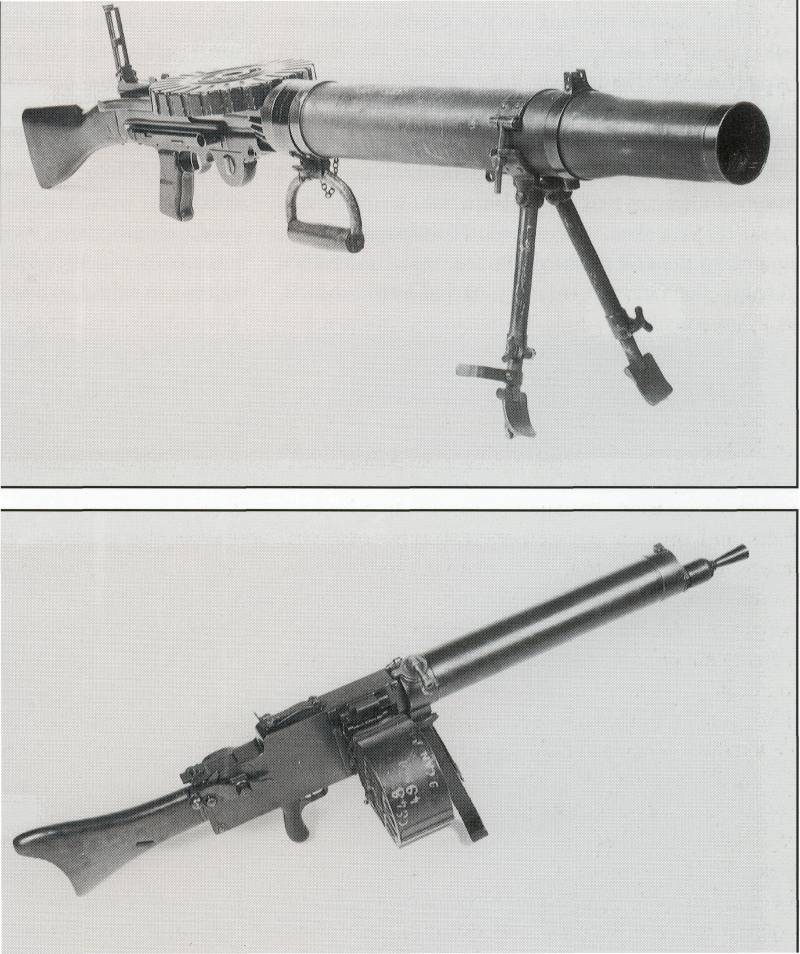
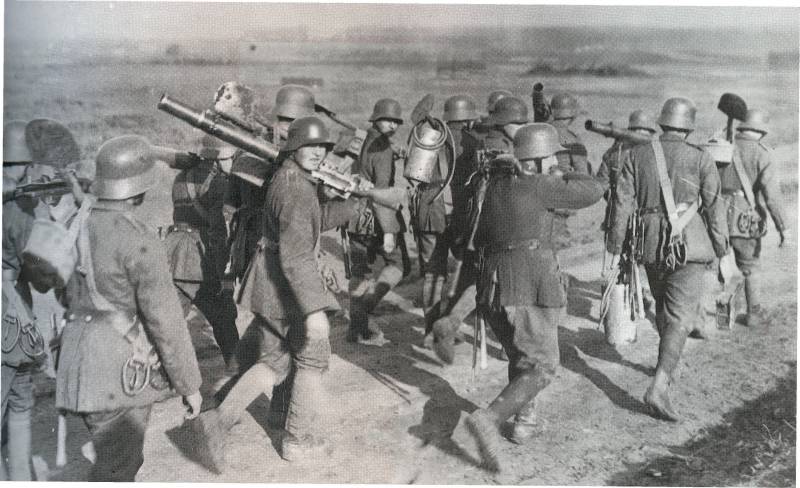
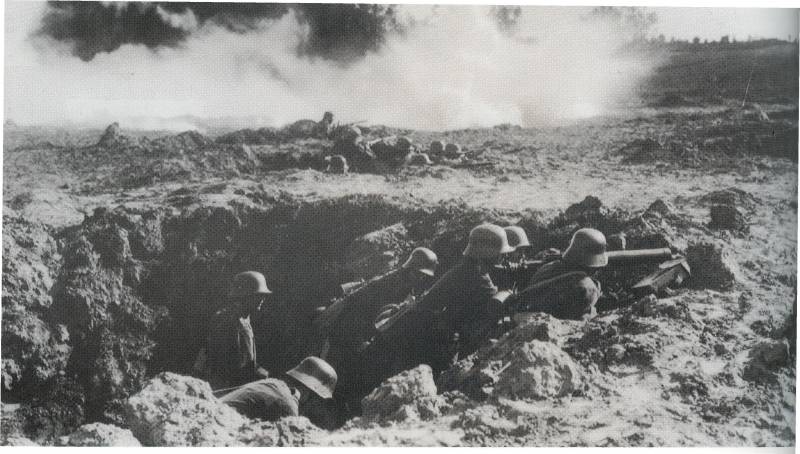
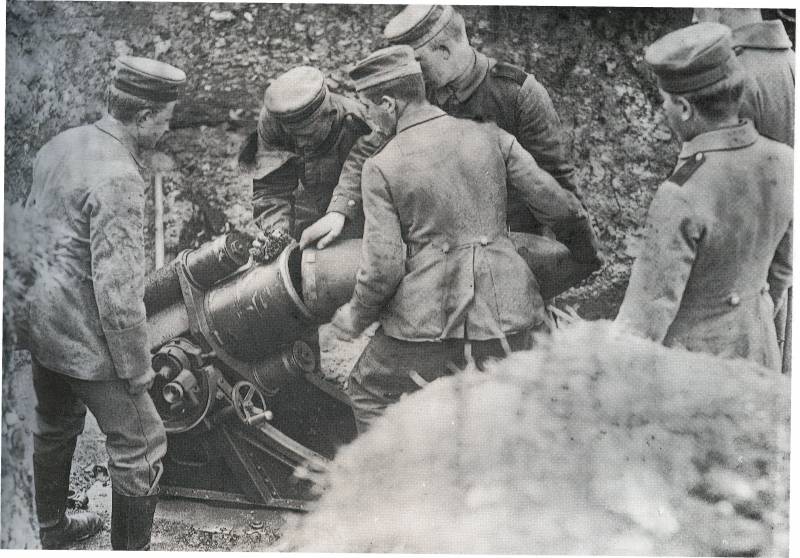
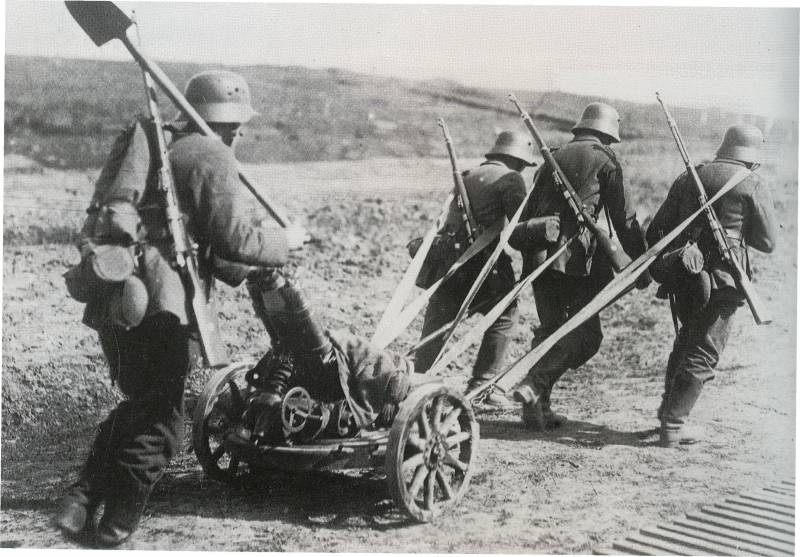
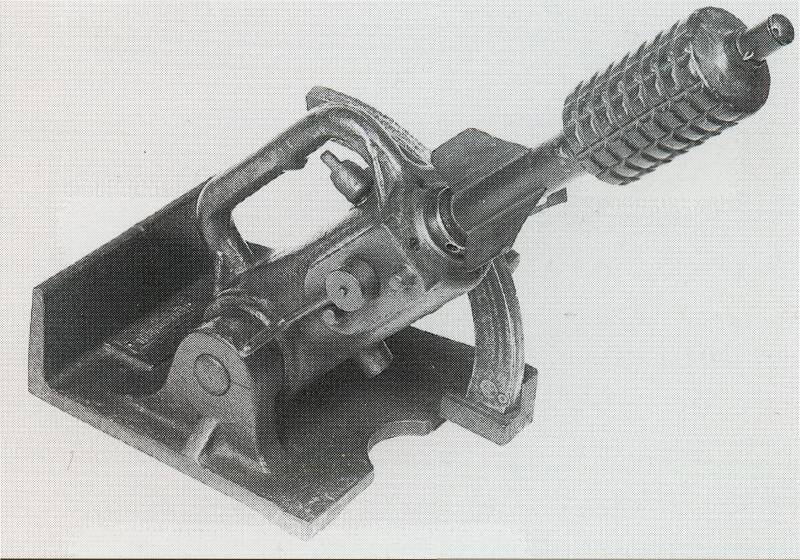
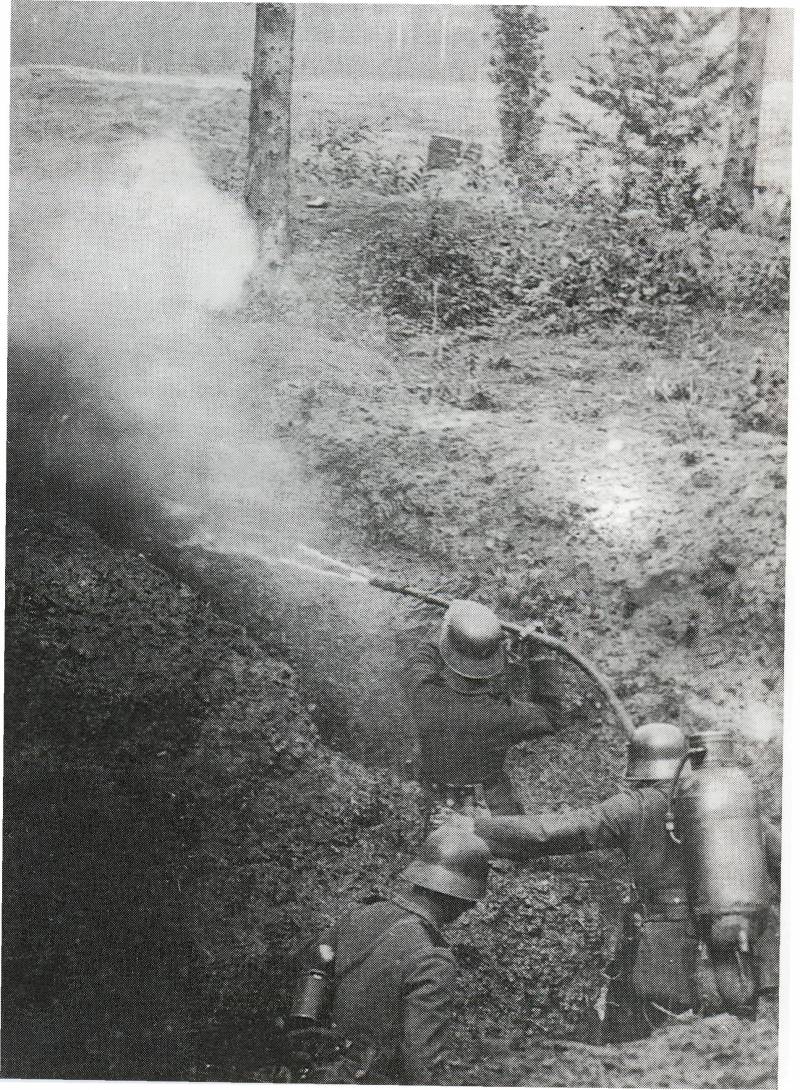
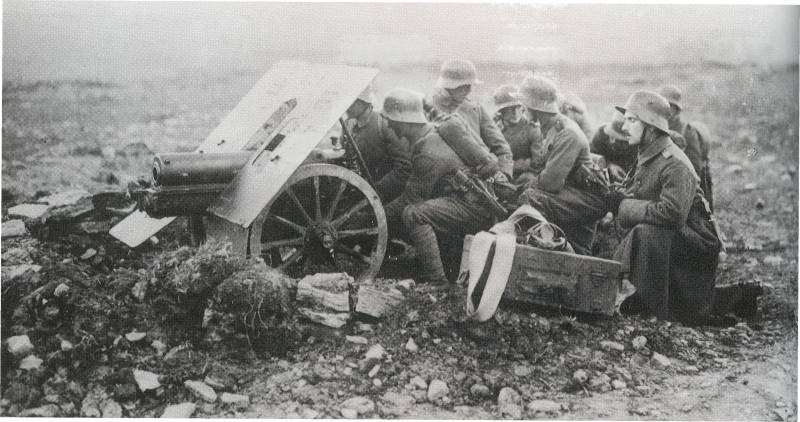
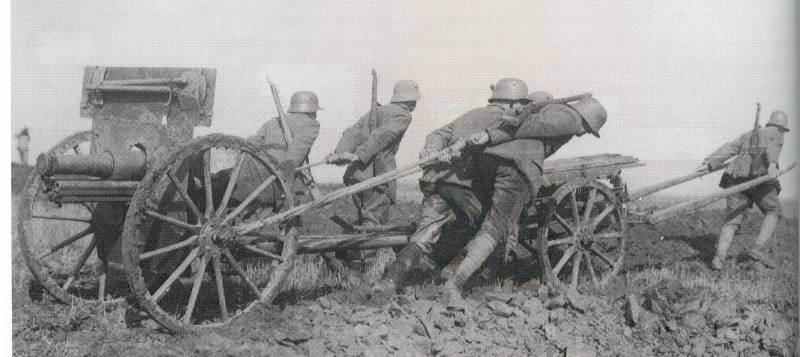
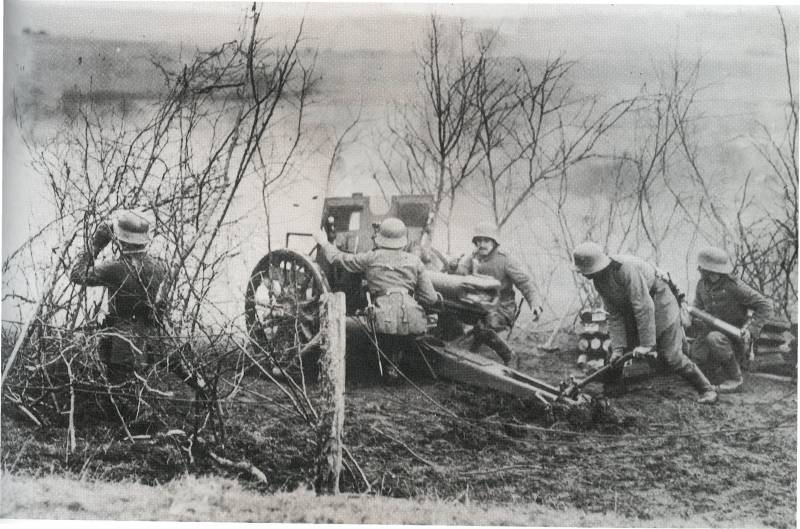
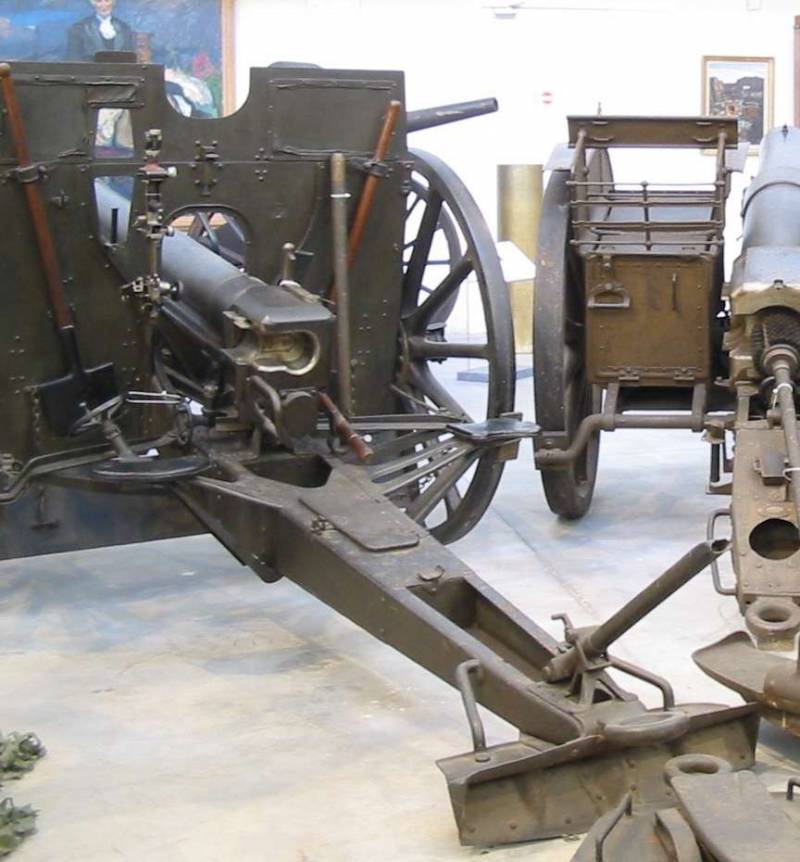
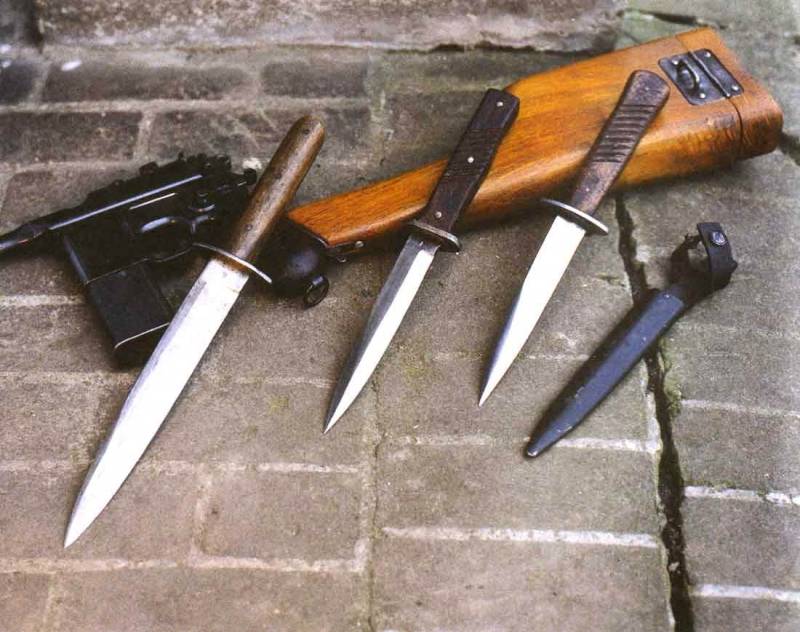
Information